ADA 2008: Novel agents for glycemic control are under investigation
Several novel classes of agents designed to treat hyperglycemia are under investigation. These agents were the subjects of a symposium here. One such novel class is the sodium glucose co-transporter (SGLT) type 2 inhibitors, which reduce glucose levels by increasing kidney excretion of glucose. The kidney plays an important role in the handling of glucose, said Robert R. Henry, MD, professor of medicine and chief of VA endocrinology and metabolism at the University of California, San Diego. SGLT-2 is expressed almost exclusively in the kidney. About 90% of glucose reabsorption by the kidney is mediated by SGLT-2 under normal circumstances.
Several novel classes of agents designed to treat hyperglycemia are under investigation. These agents were the subjects of a symposium here.
One such novel class is the sodium glucose co-transporter (SGLT) type 2 inhibitors, which reduce glucose levels by increasing kidney excretion of glucose. The kidney plays an important role in the handling of glucose, said Robert R. Henry, MD, professor of medicine and chief of VA endocrinology and metabolism at the University of California, San Diego. SGLT-2 is expressed almost exclusively in the kidney. About 90% of glucose reabsorption by the kidney is mediated by SGLT-2 under normal circumstances.
"The major concept is inhibiting the function of SGLT-2," he said. The rationale for SGLT-2 inhibitor therapy is that reduction of SGLT-2 function results in partial inhibition of glucose reabsorption in the renal proximal tubule and leads to increased glucosuria. Increased glucosuria results in reduced blood glucose levels with a potential to ameliorate glucotoxicity.
The first SGLT-2 inhibitor to enter phase 3 clinical trials is dapagliflozin. It was compared with placebo in 47 patients with type 2 diabetes who were drug-naive or stable on metformin therapy. Dapagliflozin was associated with a reduction in fasting glucose of about 20 mg/dL versus placebo, an improvement in oral glucose tolerance, and an increase in excretion of urinary reabsorption.
Patients on dapagliflozin lose an average of 2.5 to 3.5 kg of body weight and by 12 weeks their hemoglobin A1c levels declined by 0.7% to 0.9% (from a baseline of 7.1% to 8.0%).
Potential side effects include polyuria, recurrent urinary tract infections, salt wasting/dehydration, and electrolyte imbalance/depletion.
Glucokinaseactivators are in phase 1 and 2 trials. These agents improve beta cell and hepatic function, said Darryl K. Granner, MD, professor of biomedical sciences and molecular physiology and biophysics, Vanderbilt University, Nashville.
Glucokinase in the pancreas aids in glucose utilization. Stimulation of glucokinase in a person with glucokinase deficiency facilitates insulin secretion in beta cells and more effective use of glucose in the liver.
Glucagon receptor antagonists, in phase 1 and 2 clinical trials, block the hyperglycemic effect of increased glucagons secretion in patients with type 2 diabetes, said Kitt F. Petersen, MD, associate professor of medicine (endocrinology) at Yale University, New Haven, CT.
In patients with type 2 diabetes, production of glucagons by the pancreas is elevated in the setting of hypoglycemia, stimulating the liver to make glucose. The glucagons receptor antagonists decrease the action of glucagon to reduce levels of blood glucose.
Sirtuins, which are involved in regulating energy metabolism, are in phase 2 trials. The sirtuins received a heavy dose of publicity when high doses of resveratrol, which activates sirtuins, were found to increase longevity in obese mice.













